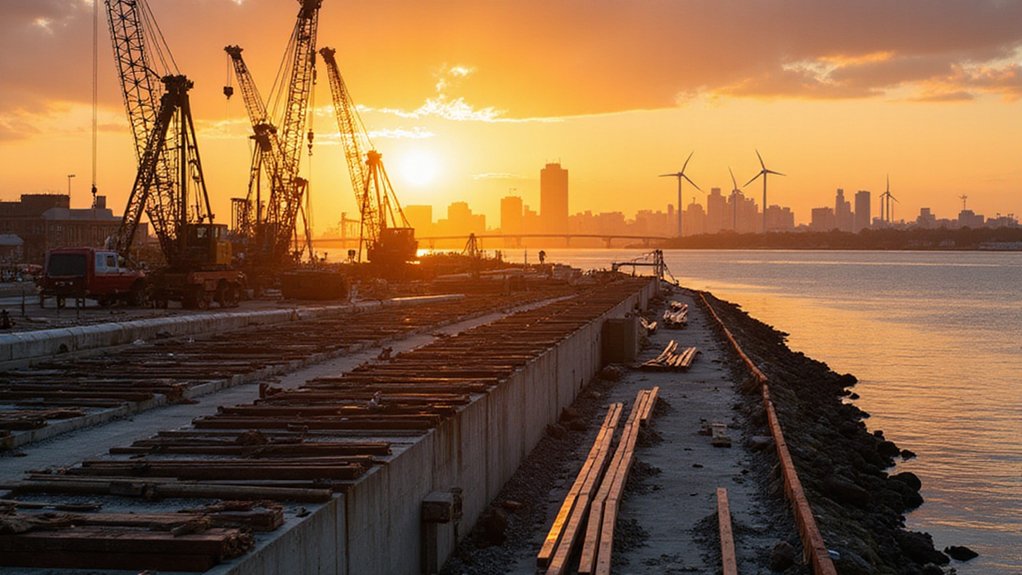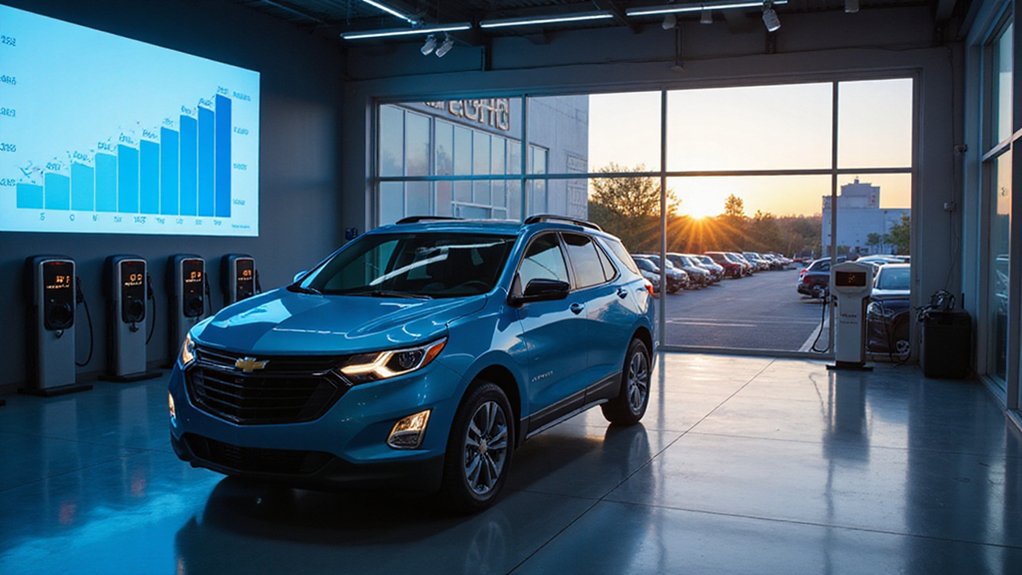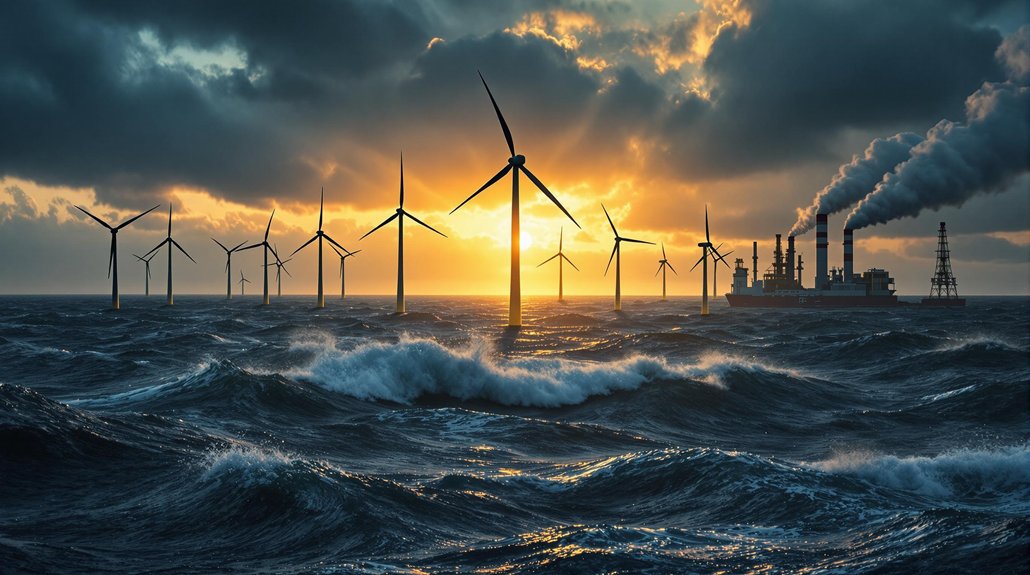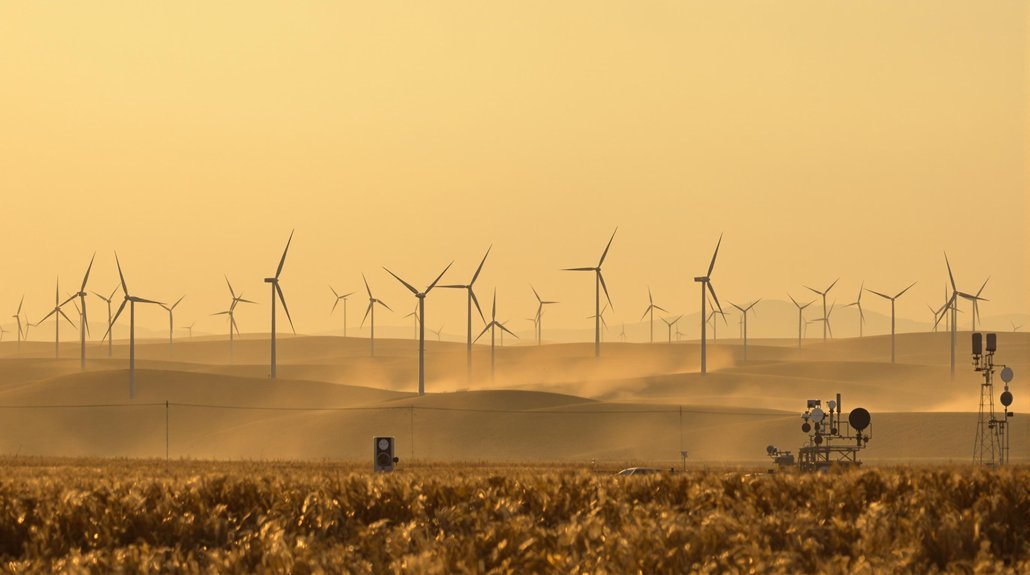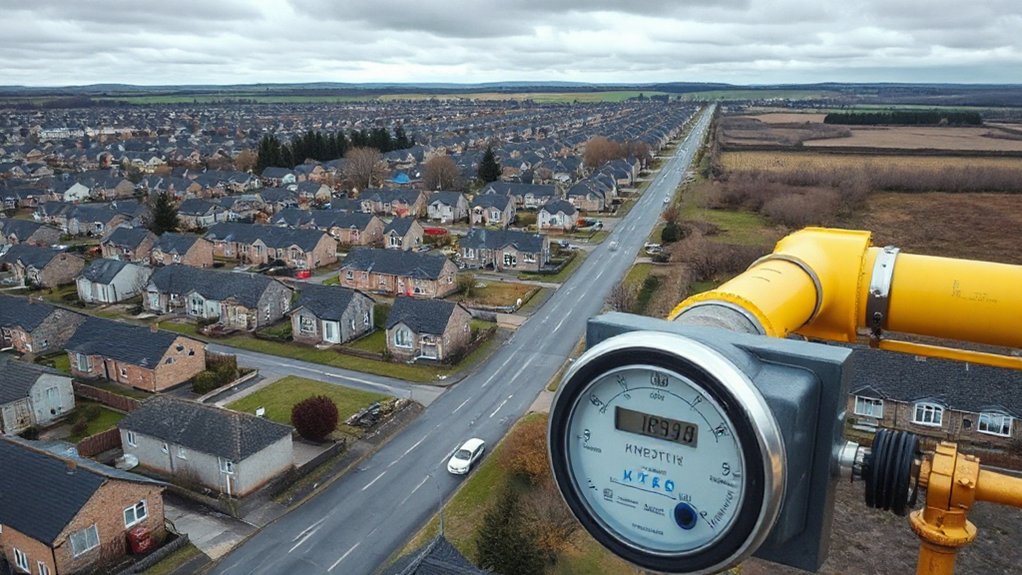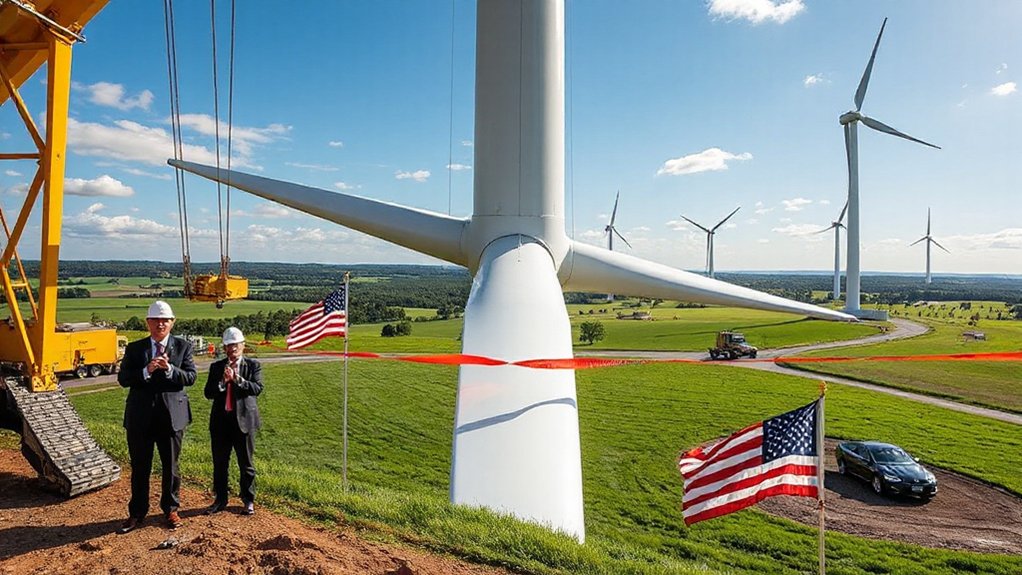Brooklyn’s getting a makeover, and it’s not from trendy coffee shops this time. The Empire Wind project is bringing massive offshore wind farms to New York waters, and Sunset Park is ground zero for the transformation. We’re talking 80,000 acres of ocean sprouting turbines 15 to 30 miles off the coast.
Here’s what’s happening: South Brooklyn Marine Terminal is morphing into a renewable energy hub. Construction crews are laying subsea rock, upgrading facilities, and basically turning the waterfront into Wind Power Central. The Sunset Park Onshore Substation will funnel electricity from those ocean turbines straight into the Gowanus Brooklyn Substation. From there, power feeds the city grid.
Brooklyn’s waterfront transforms into Wind Power Central as crews upgrade facilities for renewable energy infrastructure.
The numbers are wild. Phase one alone packs 54 turbines generating 810 megawatts. That’s enough juice for 500,000 homes. When both phases wrap up, we’re looking at 2.1 gigawatts powering a million households. New York wants 9 gigawatts of offshore wind by 2035, and this project’s a massive chunk of that goal.
Jobs? Thousands of them, supposedly. Equinor claims construction and permanent positions will flood Brooklyn and beyond. The marine terminal redevelopment positions the neighborhood as clean energy job central. Local businesses should see some action too, with suppliers and service industries getting a piece of the pie. The South Brooklyn Marine Terminal alone will create 1,500 jobs during the project’s construction phase.
Not everyone’s thrilled. Some locals worry about construction disruptions and permanent changes to their neighborhood. Freight corridors will see more traffic. The burgeoning renewable energy sector has been creating jobs that offer 25% higher wages than the national median. The setting’s changing whether people like it or not.
State and city officials keep pushing the project as essential for hitting those ambitious climate targets – 70% renewable electricity by 2030, zero emissions by 2040.
The project hit a snag with a federal halt, but it’s moving forward. Regulators, developers, and community groups have been hashing out details through endless consultations. Equinor’s been trying to address workforce concerns and site issues. The company has established a community grants program to fund local social and environmental initiatives in the affected areas.
Love it or hate it, Brooklyn’s industrial waterfront is becoming the launching pad for New York’s renewable energy future. Those 135-foot water depths offshore will soon bristle with turbines, feeding clean power to a city desperate to ditch fossil fuels.
References
- https://www.empirewind.com/ew-1/
- https://abcnews.go.com/US/empire-wind-offshore-wind-project-trump-administration-allowing/story?id=121985575
- https://www.axios.com/2025/05/19/major-ny-offshore-wind-project-can-resume-trump-officials-say
- https://www.empirewind.com
- https://www.arnoldporter.com/en/perspectives/blogs/environmental-edge/2025/04/which-way-does-the-wind-blow
